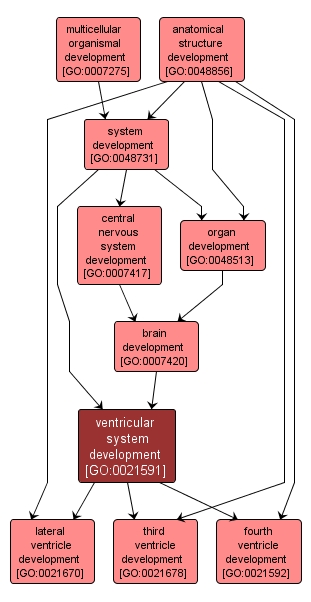| Desc: |
The process whose specific outcome is the progression of the brain ventricular system over time, from its formation to the mature structure. The brain ventricular system consists of four communicating cavities within the brain that are continuous with the central canal of the spinal cord. These cavities include two lateral ventricles, the third ventricle and the fourth ventricle. Cerebrospinal fluid fills the ventricles and is produced by the choroid plexus. |














